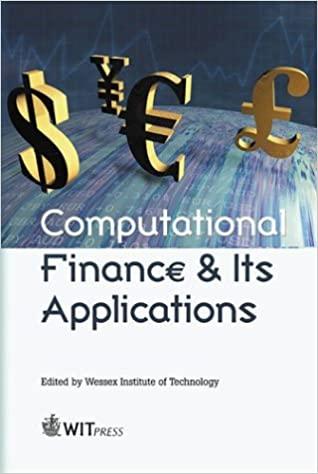Question
QUESTION 1 Working capital is a frequent source of errors in estimating project cash flows. These errors include A. forgetting about working capital entirely, forgetting
QUESTION 1
Working capital is a frequent source of errors in estimating project cash flows. These errors include
| A. | forgetting about working capital entirely, forgetting that working capital may change during the life of the project, and forgetting that working capital is recovered at the end of the project. | |
| B. | forgetting about working capital entirely and forgetting that working capital may change during the life of the project. | |
| C. | forgetting that working capital may change during the life of the project, forgetting that working capital is recovered at the end of the project, and forgetting to depreciate working capital. | |
| D. | forgetting about working capital entirely, forgetting that working capital may change during the life of the project, and forgetting to depreciate working capital. |
QUESTION 2
If the cash flows for project A are C0 = -375; C1 = +150; C2 = +100; C3 = +125; and C4 = +250, calculate the payback period (in years).
ANSWER ________
QUESTION 3
If the cash flows for project Z are C0 = -2,700; C1 = 880; C2 = 1,089; C3 = 1,331 and C4 = 1,611, calculate the discounted payback period (in years) for the project at a discount rate of 10 percent.
ANSWER ________
QUESTION 4
Your boss asked you to evaluate a project with an infinite life. Sales and costs project to $2,500 and $1,000 per year, respectively. (Assume sales and costs occur at the end of the year [i.e., profit of $1,500 at the end of year one]). There is no depreciation and the tax rate is 32 percent. The required rate of return is 12 percent. If the project costs $6,000 what is the NPV?
ANSWER ________
QUESTION 5
The main advantage of the payback rule is that it
| A. | adjusts for uncertainty of early cash flows. | |
| B. | better accounts for salvage costs at the end of a project. | |
| C. | is simple to use. | |
| D. | does not discount cash flows. |
QUESTION 6
If an investment project (normal project) has an IRR equal to the cost of capital, the NPV for that project is
| A. | unable to be determined. | |
| B. | zero. | |
| C. | positive. | |
| D. | negative. |
QUESTION 7
If the cash flows for Project M are C0 = -2,000; C1 = +400; C2 = +1,400; and C3 = +1,300, calculate the IRR for the project. Please input the percentage format for your answer. And there is no need to put the percentage sign (%).
ANSWER ________
QUESTION 8
The following table gives the available projects (in $millions) for a firm. If the firm has a limit of $210 million to invest, what is the maximum NPV the company can obtain?
ANSWER ________
QUESTION 9
If the cash flows for Project A are C0 = -1,000; C1 = +750; C2 = +600; and C3 = +510, calculate the NPV of the project using a 10 percent discount rate.
ANSWER _______
QUESTION 10
Driscoll Company is considering investing in a new project. The project will need an initial investment of $1,600,000 and will generate $750,000 (after-tax) cash flows for three years. Calculate the IRR for the project. Please input the percentage format for your answer. And there is no need to put the percentage sign (%).
ANSWER _________
QUESTION 11
A project will have only one internal rate of return if
| A. | the net present value is negative. | |
| B. | the cash flows decline over the life of the project. | |
| C. | the net present value is positive. | |
| D. | there is a one-sign change in the cash flows. |
QUESTION 12
The following are measures used by firms when making capital budgeting decisions except
| A. | P/E ratio. | |
| B. | net present value. | |
| C. | payback period. | |
| D. | internal rate of return. |
QUESTION 13
The IRR is defined as
| A. | the difference between the cost of capital and the present value of the cash flows. | |
| B. | the discount rate used in the discounted payback period method. | |
| C. | the discount rate that makes a project's NPV equal to zero. | |
| D. | the discount rate used in the NPV method. |
Step by Step Solution
There are 3 Steps involved in it
Step: 1

Get Instant Access to Expert-Tailored Solutions
See step-by-step solutions with expert insights and AI powered tools for academic success
Step: 2

Step: 3

Ace Your Homework with AI
Get the answers you need in no time with our AI-driven, step-by-step assistance
Get Started


